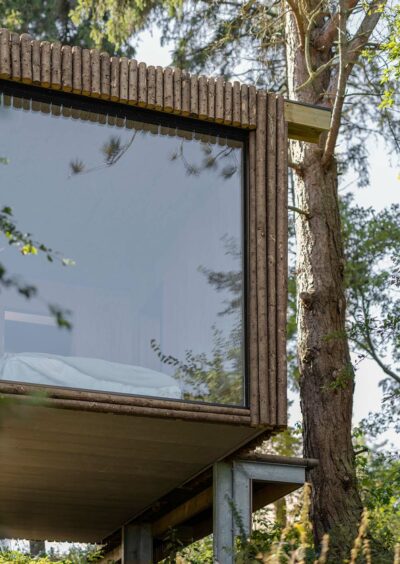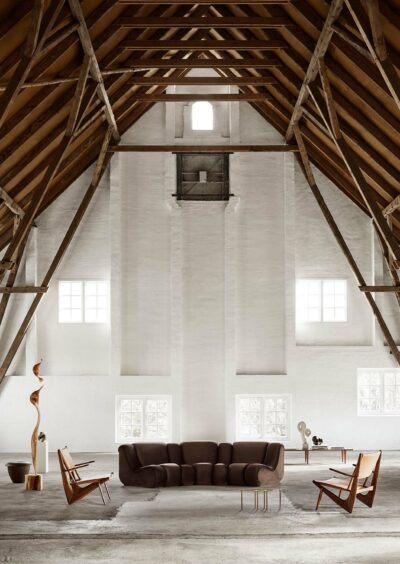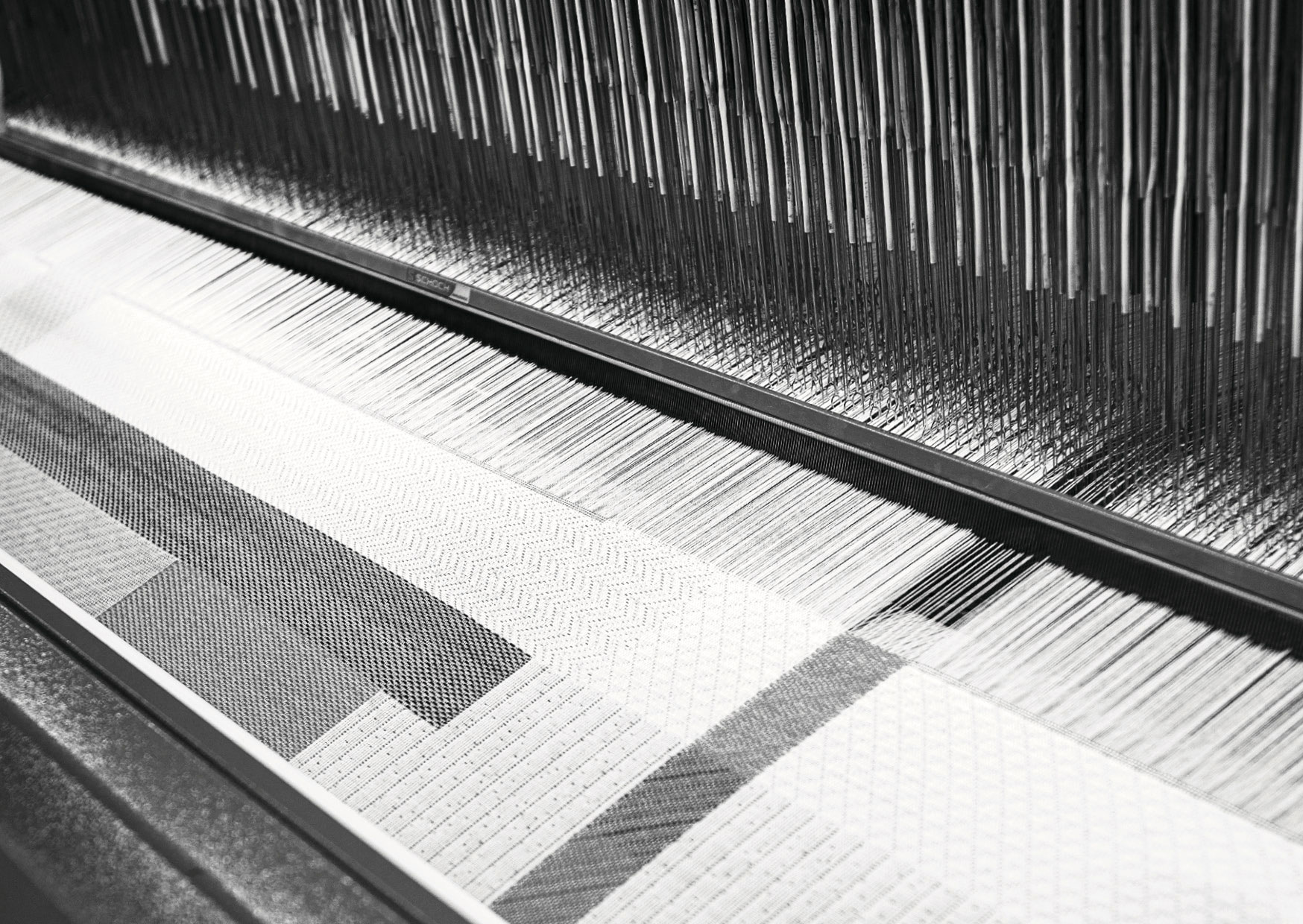
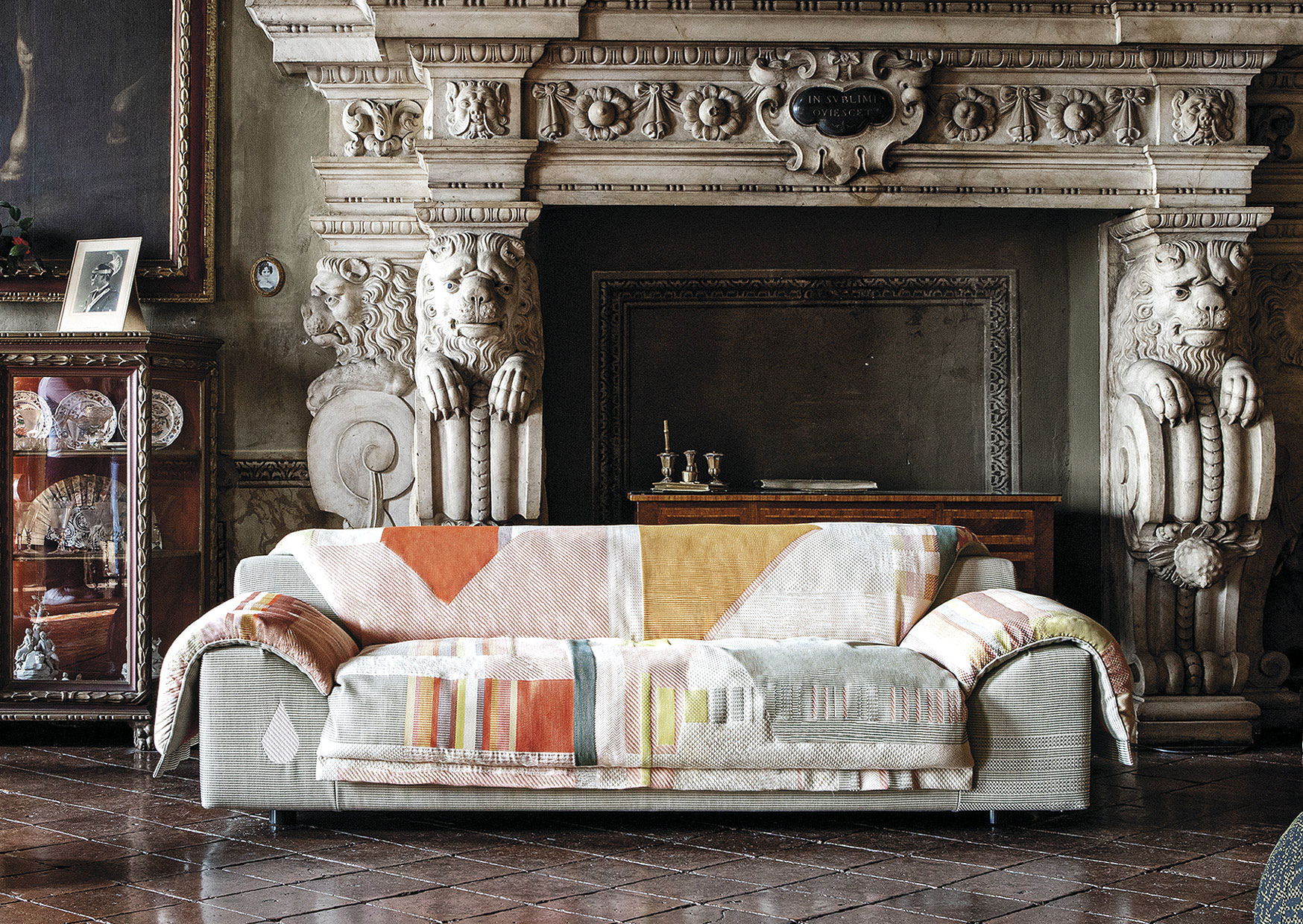
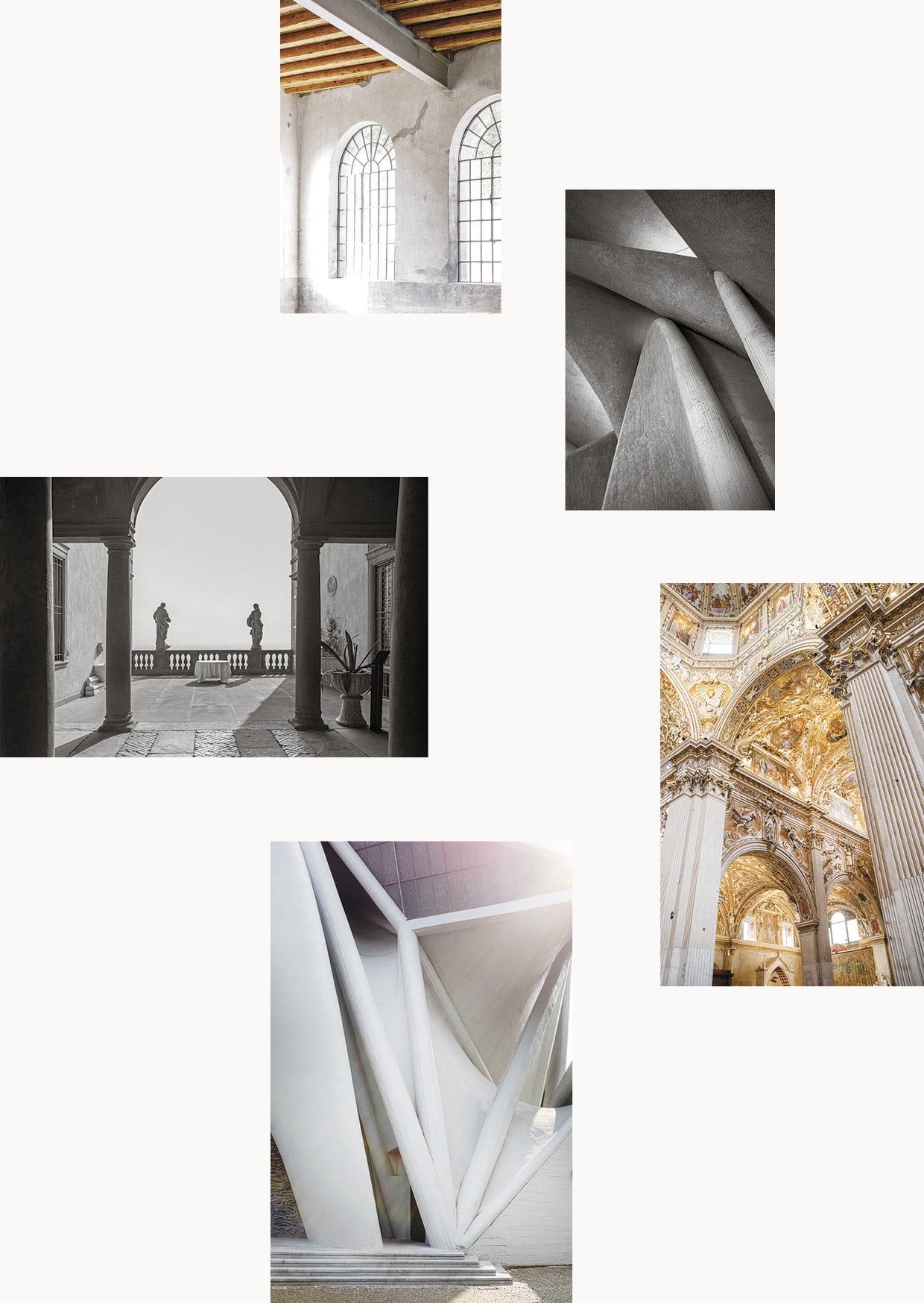
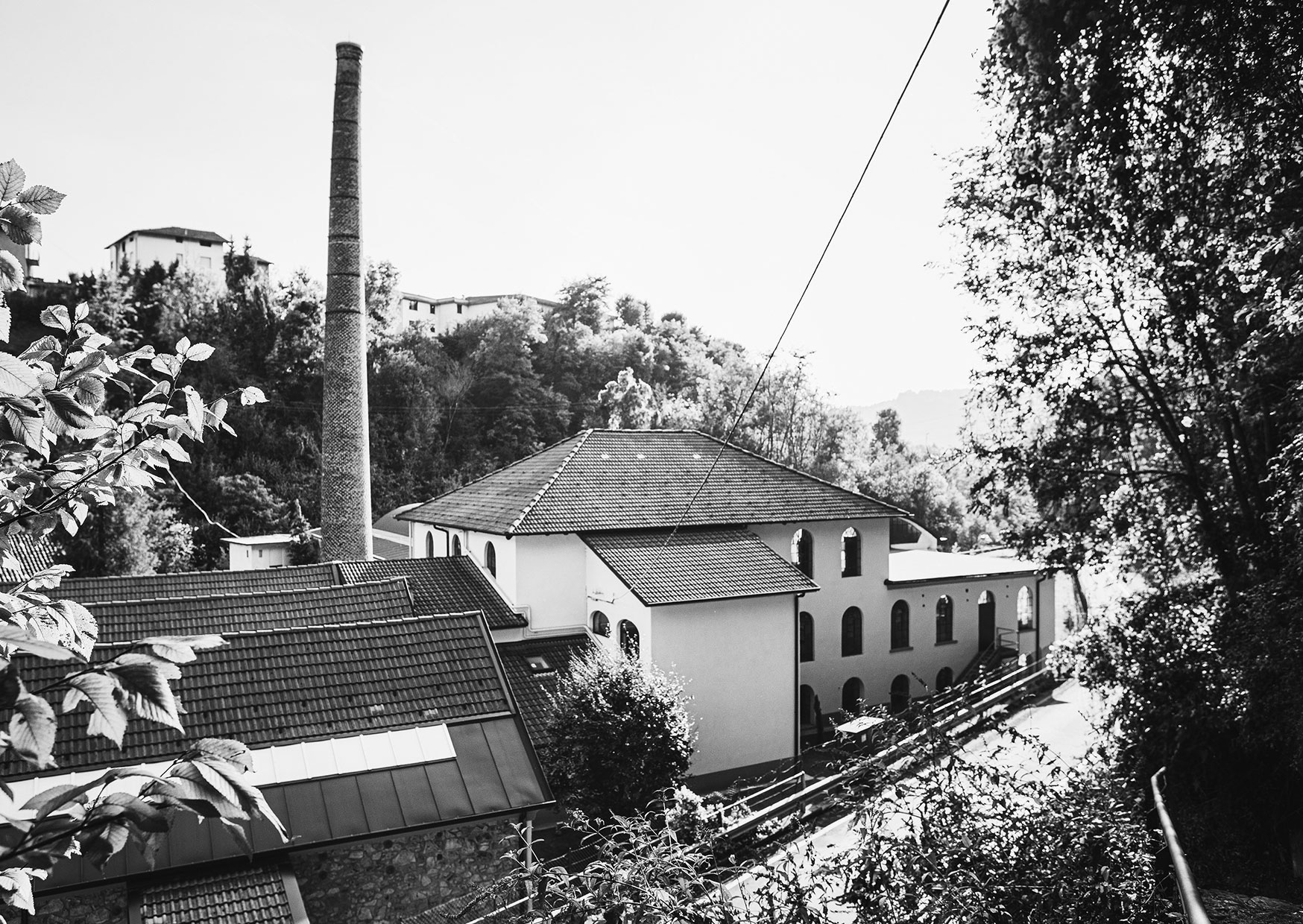
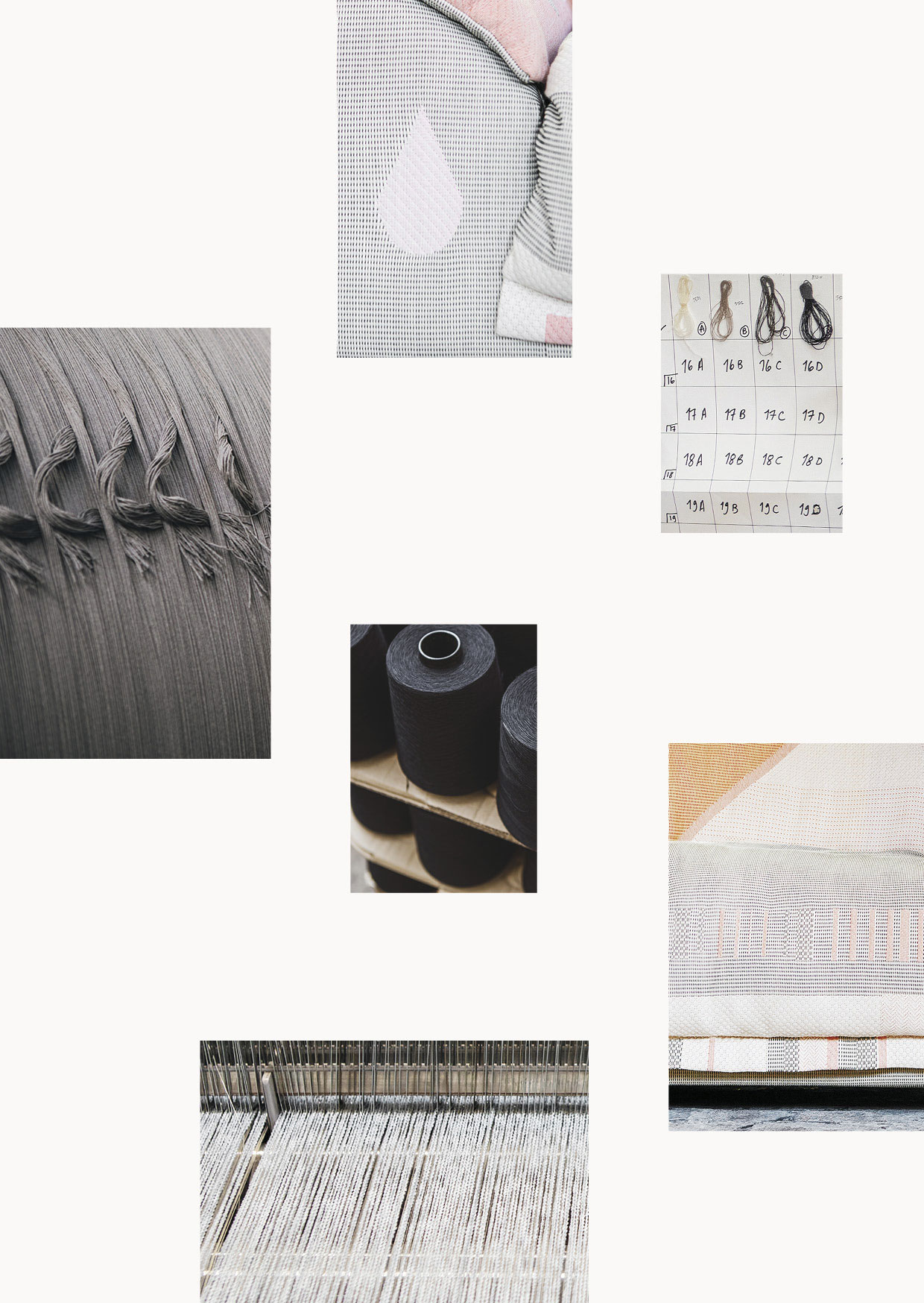
VITRA
ON CRAFT AND INDUSTRY
DESIGN
FOR ITS DESIGNER HELLA JONGERIUS THE VLINDER SOFA EMBODIES THE HUMAN TOUCH OF CRAFTS WITH THE EXPLORATORY POSSIBILITIES CREATED BY DIGITAL TECHNOLOGY.
When Hella Jongerius designed the Vlinder sofa for Vitra she combined her abiding passion for weaving and handcraft with 12 years of research into colours, textures and materials for the Swiss furniture company. Vlinder is a contemporary sofa in form and function that draws on a century-long heritage of Italian textile production and the latest technology. So it was fitting that Vitra launched the production version of the sofa in Bergamo, where its casual contemporary style was seemingly at home on the polished terracotta floors of the Gran Salone of Palazzo Terzi, an aristocratic mansion dating back to the 17th and 18th centuries.
In the Lombardy region north east of Milan, Bergamo is renowned for the cobblestone alleys, Romanesque cathedral and Baroque palaces of its upper medieval town. But it also has a modern lower city that’s home to experimental modernist architecture such as Giuseppe Pizzigoni’s Chiesa di Maria S.ma Immacolata di Longuelo, a concrete masterpiece completed in 1965.
Textile manufacture in the surrounding towns has long contributed to Bergamo’s vibrant economy and today’s mills combine traditional know-how with state-of-the-art techniques. The Vlinder sofa is a testament to these skills. Named because its duvet-like cover vaguely resembles a butterfly, the sofa was created in collaboration with a 134-year old textile company based in a small town near Bergamo that can trace its wool processing roots back to the republic of Venice circa 1400.
“Vlinder is a master study in weaving. A team of textile engineers and hand weavers joined forces to make this unique design possible,” says Jongerius, who heads up her own Berlin-based studio, Jongeriuslab and is Vitra’s art director of colour and materials. “It shows a new way of producing a tailored one-off pattern and creating an haute couture sofa that combines the human touch of crafts with the possibility of digital technology.”
When designing a new textile she always starts with a weaving expert and designer who know how to translate hand-woven pieces into industrial production. “Then they deliver their design to the mill where the real trick happens.”
The real trick in this instance is to create a contemporary tapestry, which Vitra calls Tailored Fabric, combining eight colours with yarns of two different thicknesses into abstract shapes. For each sofa a seven metre long blanket is created with the shapes of each component piece woven into the fabric. This blanket looks like a tapestry with seven different jacquard patterns. But, whereas the pattern of a tapestry of old comes from different colour combinations, this contemporary tapestry combines colours and bindings, a computer driven process resulting in 65 million pixels or warps crossing weft.
“I would say that Vlinder demonstrates how the best of two worlds – craft and industry – can be combined,” says Jongerius. Till Weber, Vitra’s head of colours and fabric research and design who works closely with Jongerius, says Vlinder took three years and six different design steps to achieve the rich colours and textures that the designer wanted.
“We learnt so much about colour and structure,” says Weber leading a tour of the textile factory, where computer driven machines are weaving the Vlinder textile. The textile firm, owned by three friends who met at Bergamo’s textile school, has its rich heritage on display in the form of archives with 50,000 samples. Its reception room was once a weaving room in the 1800s.
Normally with a sofa the major design work is in the form and unseen upholstery materials over which a fabric or “skin” is applied, says Weber. But with Vlinder the “skin” is the product as well, its tailored downy overlay drapes over a contemporary body that is barely visible. In the light red version chosen for the launch the textile looks like nicely worn quilts thrown over a well-lived on sofa.
The sofa is an evolution of the research project Jongerius began in 2006, to study the properties and possibilities of colours, textures, finishes and materials of Vitra’s classic and contemporary products. The research led to a library or system of signature colour and materials around which future products can be developed as well as coherent refreshes of the classic designs.
WORDS JENI PORTER
PHOTOGRAPHY VITRA
A ROOM WITH A VIEW
A diminutive wooden dwelling on stilts among forest trees focuses attention on interior details to heighten the contrast between its small scale and the vastness of nature.
CASE STUDY
— NEW FOLK
Whether using traditional or innovative materials, designers lean on the craft and expertise of former practitioners to carve, shape, mould or weave.
THE SHAPE OF LIGHT
— ARK X GUBI
In collaboration with Gubi, and to celebrate the brand’s new lighting collections, Ark Journal’s creative team produced a photo essay inspired by the Californian mid-century modern architectural style.

VITRA
ON CRAFT AND INDUSTRY
DESIGN
FOR ITS DESIGNER HELLA JONGERIUS THE VLINDER SOFA EMBODIES THE HUMAN TOUCH OF CRAFTS WITH THE EXPLORATORY POSSIBILITIES CREATED BY DIGITAL TECHNOLOGY.
When Hella Jongerius designed the Vlinder sofa for Vitra she combined her abiding passion for weaving and handcraft with 12 years of research into colours, textures and materials for the Swiss furniture company. Vlinder is a contemporary sofa in form and function that draws on a century-long heritage of Italian textile production and the latest technology. So it was fitting that Vitra launched the production version of the sofa in Bergamo, where its casual contemporary style was seemingly at home on the polished terracotta floors of the Gran Salone of Palazzo Terzi, an aristocratic mansion dating back to the 17th and 18th centuries.
In the Lombardy region north east of Milan, Bergamo is renowned for the cobblestone alleys, Romanesque cathedral and Baroque palaces of its upper medieval town. But it also has a modern lower city that’s home to experimental modernist architecture such as Giuseppe Pizzigoni’s Chiesa di Maria S.ma Immacolata di Longuelo, a concrete masterpiece completed in 1965.
Textile manufacture in the surrounding towns has long contributed to Bergamo’s vibrant economy and today’s mills combine traditional know-how with state-of-the-art techniques. The Vlinder sofa is a testament to these skills. Named because its duvet-like cover vaguely resembles a butterfly, the sofa was created in collaboration with a 134-year old textile company based in a small town near Bergamo that can trace its wool processing roots back to the republic of Venice circa 1400.
“Vlinder is a master study in weaving. A team of textile engineers and hand weavers joined forces to make this unique design possible,” says Jongerius, who heads up her own Berlin-based studio, Jongeriuslab and is Vitra’s art director of colour and materials. “It shows a new way of producing a tailored one-off pattern and creating an haute couture sofa that combines the human touch of crafts with the possibility of digital technology.”
When designing a new textile she always starts with a weaving expert and designer who know how to translate hand-woven pieces into industrial production. “Then they deliver their design to the mill where the real trick happens.”
The real trick in this instance is to create a contemporary tapestry, which Vitra calls Tailored Fabric, combining eight colours with yarns of two different thicknesses into abstract shapes. For each sofa a seven metre long blanket is created with the shapes of each component piece woven into the fabric. This blanket looks like a tapestry with seven different jacquard patterns. But, whereas the pattern of a tapestry of old comes from different colour combinations, this contemporary tapestry combines colours and bindings, a computer driven process resulting in 65 million pixels or warps crossing weft.
“I would say that Vlinder demonstrates how the best of two worlds – craft and industry – can be combined,” says Jongerius. Till Weber, Vitra’s head of colours and fabric research and design who works closely with Jongerius, says Vlinder took three years and six different design steps to achieve the rich colours and textures that the designer wanted.
“We learnt so much about colour and structure,” says Weber leading a tour of the textile factory, where computer driven machines are weaving the Vlinder textile. The textile firm, owned by three friends who met at Bergamo’s textile school, has its rich heritage on display in the form of archives with 50,000 samples. Its reception room was once a weaving room in the 1800s.
Normally with a sofa the major design work is in the form and unseen upholstery materials over which a fabric or “skin” is applied, says Weber. But with Vlinder the “skin” is the product as well, its tailored downy overlay drapes over a contemporary body that is barely visible. In the light red version chosen for the launch the textile looks like nicely worn quilts thrown over a well-lived on sofa.
The sofa is an evolution of the research project Jongerius began in 2006, to study the properties and possibilities of colours, textures, finishes and materials of Vitra’s classic and contemporary products. The research led to a library or system of signature colour and materials around which future products can be developed as well as coherent refreshes of the classic designs.
WORDS JENI PORTER
PHOTOGRAPHY VITRA




